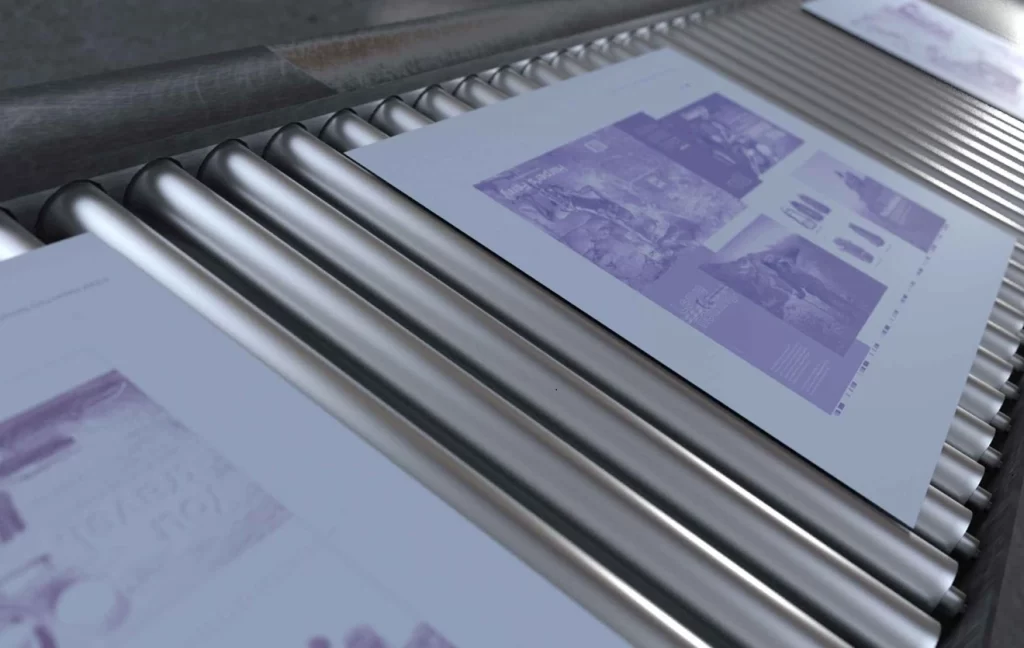Offset Printing Blankets: Full Guide [2025]
Among all the printing techniques, the offset is mostly used to print on different surfaces. It includes transferring the inked image from a plate to a rubber-covered blanket and finally onto the printing surface. A key component of this process is the printing blanket.
This guide will chart everything you need to know about offset printing blankets and their role in the print industry.
Table of Contents
What is an Offset Printing Blanket?
Big things come out of small things. As for this, the printing blanket has a significant contribution to the offset printing process. It is a thin, flexible layer made of material, used as a bridge to connect the printing plate to the substrate.
It is coiled around the impression cylinder of an offset printing press. This blanket transfers ink from the plate so that it can adhere to paper, cardstock, or other substrates.
Types of Offset Printing Blankets
There are several types of printing blankets with different materials and thicknesses, each for a special printing application. The most common types include:
- Compressible Printing Blankets
As for commercially available blankets, compressible blankets are the most common type for offset printing. They are made of a soft, spongy material which compresses under pressure.
As a rule, they are designed to work widely on different media such as paper, cardstock, and metal. Because of the rubber-like material, these are known for their flexibility, long life, and great ink transfer properties.
- Non-compressible Printing Blankets
Non-compressible blankets have multiple purposes ranging from use in high-volume printing environments. These sheets are made of a less give-in fabric that is hard and doesn’t compress with the weight. These, normally, are purpose-built mainly for printing on heavier substrates such as cardboard and packaging materials.
- UV Printing Blankets
These blankets are specially made to work with UV inks for printing. UV blankets are made of a heat and UV-radiation-resistant material. They have excellent chemical resistance and UV resistance.

Advantages of Using Offset Printing Blankets
Printing blankets does an amazing job in the offset printing process. The spectacles act as a serious player in maintaining a proper color balance, and sharpness and reducing printing defects.
Durable printing blankets are a prerequisite for the longevity of a printing press. It would be a budget-wise option for the long term if we invest in high-quality blankets. It is compatible with a variety of ink types and surfaces which make it suitable for printing on paper, cardboard, or other materials.
Factors to Consider When Choosing a Printing Blanket
When an offset blanket is chosen, there are several things to consider:-
The type of substrate being printed on: The softness and thickness of the blanket should be well-matched with the substrate being printed on. In a nutshell, a compressible blanket would be the right option for printing on paper while a non-compressible blanket would be a good option for printing on a corrugated fiberboard.
The type of ink being used: The blanket should be in line with the type of ink used. For example, a UV blanket is required for printing with UV inks.
The printing speed: The blanket should be able to match the printing speed of the press. For high-speed presses, a thick blanket is needed.
Maintenance of Offset Printing Blankets
If you don’t schedule printer maintenance, your equipment will schedule it for you! It calls for regular maintenance to maintain print quality and reliability. This includes cleaning the blanket regularly to remove ink and dust.
In addition, you should check the blanket for any signs of wear and tear like cracks and cuts. If any damage is found, the blanket must be replaced at once.
Importance of Maintaining Printing blanket
Maintaining printing blankets in top-top condition is not just a matter of extending their lifespan; it also ensures the quality of your prints. Over time, ink droplets, residue, and dust may accumulate on these connecting bridges and cause different DTF printing problems.
So, regularly clean your blankets and inspect any signs of wear such as cracks, tears, and uneven surfaces. This will help to prevent issues like streaks, smudges, and patchy colors.
Plus, taking care of your printing blanket reduces downtime and improves overall efficiency. Clean and well-maintained blankets ensure optimal ink transfer, reducing waste and preventing unwanted color variations.
In short, a little upkeep goes a long way in ensuring your printing operations are cost-effective and consistently produce top-notch results.
Conclusion
Offset printing blankets are key components of the offset printing process to ensure quality results on the substrate. Choosing the right lithographic blanket can go a long way to attract customers with outstanding prints.
Took my words seriously — take time to do research, make the right investment, and see your dreams come to life, with class and quality.
